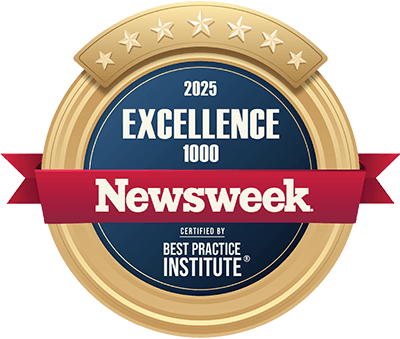How to Develop Software
A Step-by-Step Guide
Since 1989, ScienceSoft has partnered with clients to plan and build solutions of any type and complexity — with Agile practices at the core since 2007. By optimizing development processes, we’ve helped them cut costs by 2–12x.
How to Develop Your Own Software: Summary
A development process for new software includes solution planning, design, coding, testing, and deployment. When creating a lean working version (MVP) first, this process can take just 2–6 months.
Key 8 steps to software development
- Create a requirements specification.
- Prepare a project plan.
- Design UX and UI.
- Architect the software.
- Code the solution.
- Establish integrations.
- Run rigorous testing.
- Set the ready solution live.
A software development project team requires a project manager, a business analyst, UX and UI designers, front-end and back-end developers, QA and DevOps engineers. Depending on the project’s nature, additional talents can be required, e.g., data scientists, 3D designers.
Sourcing Models for Software Development
Software Development Process Roadmap
Below, ScienceSoft describes the core steps we take to complete application development projects. Some tasks can be skipped if you choose to develop an MVP. Also, different development methodologies (Scrum, Kanban, Waterfall, V-model, etc.) handle these tasks differently – they can be performed iteratively in parallel, or linearly.
1.
Define requirements for the software
- Analyzing the company’s business needs and the expectations of the software target users.
- Researching the competition, analyzing competitors' weaknesses and strengths.
- Defining global, industry- and region-specific compliance requirements for the software, e.g., HIPAA for healthcare solutions, PCI DSS for payment apps, GDPR for the EU.
- Creating a detailed software requirements specification.
- Introducing the optimal feature set for the software with features prioritized for implementation according to their value for end users.
- Determining the risks that can hinder smooth software launch and suggesting pragmatic ways to address them.
For software product development companies, we suggest the optimal market niche, define product differentiation, and formulate a unique selling proposition. We also provide expert advice on the most profitable software monetization models and the winning customer acquisition, conversion, and retention strategies.
2.
Prepare a project plan
- High-level software design: app type (mobile, web, desktop), functional modules, advanced capabilities (enabled by AI/ML, IoT, blockchain, etc.), interactions between the modules and with other software, data flows.
- Defining a precise project scope, deliverables, case-specific KPIs.
- Creating a software development project plan with major milestones and a work breakdown structure.
- Composing the team and planning effective collaborative flows.
- Providing accurate estimates of the development time and costs.
- Drawing up a business case: performing the cost-benefit analysis, calculating ROI and NPV.
Building a proof of concept is a way to early assess the solution’s technical viability and confidently move to the detailed design. We typically deliver a PoC for innovative software and complex enterprise solutions and reuse the created components later to speed up development.
3.
Design UX and UI
- Conducting comprehensive UX research; describing how a user will interact with the software.
- Creating wireframes that showcase basic functionality and content layout on each screen.
- Designing a sleek visual appearance of user-facing apps, composing a UI kit.
- Combining wireframes into dynamic UX prototypes, transforming the prototypes into full-color UI mockups.
- Performing the prototype user testing.
I recommend investing in the unique UI design only if the visual style is a solution's competitive advantage. Otherwise, going with default themes and focusing on software functionality would be a more reasonable option.
4.
Architect the software
- Defining how functional modules of future software should work at the code level.
- Designing a secure and scalable architecture for the solution.
- Deciding on integration approaches (point-to-point, middleware-based, iPaaS, etc.) between the software components.
- Choosing the optimal technology stack.
At ScienceSoft, we rely on cloud services by well-established cloud providers – Microsoft, Amazon, Google – to streamline solution delivery and maintenance. Convenient managed services, the pay-as-you-go model, and multiple ready-to-use components (messaging, data science, IoT, and more) offered by cloud providers help create software 2–20x faster and optimize project investments.
5.
Code the solution
- Establishing development, testing, and delivery automation environments: CI/CD, container orchestration, etc.
- Writing server-side code and APIs.
- Turning static UI mockups into the fully functional GUI.
- Setting up and configuring data storage.
- (for AI-powered software) AI model development, training, and tuning.
- Thoroughly documenting the software and coding process.
We start with scoping and delivering an MVP to drive early payback and then proceed with rapid incremental software evolution based on the frequent feedback from end users.
6.
Establish integrations
Setting secure integrations between your software and required systems:
-
Corporate apps, e.g., CRM, ERP, accounting software, a BI solution.
-
External data sources relevant for the software-supported operations, e.g., to import traffic data for transportation systems or capital market data feeds for investment apps.
-
Third-party services: authentication, payment, messaging, etc.
-
Hardware, e.g., personal devices, tracking tools, industrial robots.
7.
Run rigorous testing
- Creating a test plan with a testing scope, test types addressing all functional and non-functional software requirements, reporting procedures, etc.
- Creating test cases and checklists.
- Writing and running automated test scripts (API and UI tests).
- Conducting unit testing and static code analysis in parallel with development.
- Carrying out functional, performance, security, integration testing.
- Fixing bugs detected by testing.
I strongly recommend involving QA specialists as early as at the requirements specification stage. A QA team needs to make sure that the requirements are fully testable from the very beginning of the SDLC: it will help perform comprehensive testing and avoid costly redevelopments later on.
8.
Set the ready solution live
- Deploying software in the production environment.
- User training sessions (onsite, remote, or hybrid).
- Software performance monitoring and fixing the bugs that users discover.
- Planning improvements and new features to be added based on user feedback, business needs, market trends, etc.
Note: Under iterative development, all the described tasks will be cycled in 2-week – 6-month releases of new functionality.
Once launched, software needs supervision and improvement to work smoothly in the long run. Our team can take over continuous software maintenance to ensure high performance, availability, full security, and functional relevance of your solution. We can also organize 24/7 user support to quickly resolve issues and help users unlock max value with the software.
Software Development Costs
The cost of software development varies greatly from $100,000 to $1,500,000. From ScienceSoft’s experience, major factors impacting the development cost are:
- Application type (web, mobile, desktop); platforms and OS versions supported.
- The number and complexity of software features.
- The number of user roles.
- Uniqueness and specifics of the UI design.
- The scope and complexity of integrations.
- Availability, performance, scalability, and security requirements.
- Regulatory compliance requirements.
- The chosen sourcing model and team composition.
- Development approach and tech stack.
- Frequency of software updates and improvements.
How Much Will It Cost to Develop Your Software Solution?
Please answer a few questions about your software development needs. This will help our team provide a tailored service offering and a cost estimate much quicker.
Thank you for your request!
We will analyze your case and get back to you within a business day to share a ballpark estimate.
In the meantime, would you like to learn more about ScienceSoft?
- Project success no matter what: learn how we make good on our mission.
- 4,200+ successful projects: explore our portfolio.
- 1,400+ incredible clients: read what they say.

Why Develop Software with ScienceSoft
- 750+ IT professionals, including project managers, business analysts, architects, developers, data scientists, QA, security, DevOps, and support engineers.
- Expertise in 30+ industries: healthcare, finance, manufacturing, ecommerce, and more.
- Over 4,200 success stories, including projects for IBM, NASA, eBay, MTV, Deloitte, Nestle, LeoBurnett, bioAffinity Technologies, and other global market leaders.
- Competencies in advanced techs like AI/ML, big data, IoT, AR, VR, and blockchain.
- Compliance experts with 7–20 years of experience to achieve software compliance with the relevant legal frameworks.
- Quality-first approach backed by ISO 9001 and robust security management supported by ISO 27001.
Benefits of Software Development with ScienceSoft
Optimized cost
We prioritize iterative development, use flexible cloud-native architectures, rely on ready-made components (frameworks, platforms, services, open-source APIs, etc.), and employ other proven cost optimization practices to reduce development efforts and associated expenses.
Fast development
We guarantee a project start in just 1–2 weeks and can roll out an MVP of your software in 2–6 months. Our team relies on well-established Agile processes, a mature DevOps culture, and a balanced mix of manual and automated testing to introduce major releases every 2–3 weeks.
Transparent cooperation
We compose a tailored set of KPIs to measure cooperation efficiency and software quality and regularly report the accomplished tasks to ensure you always stay updated on the development progress. We can grant you access to our tracking systems to enable real-time process control.
Strong security
We start the cooperation with signing a NDA (before the initial negotiation, if needed) to legally protect your sensitive information. In cybersecurity for over 22 years, we follow SSDLC and DevSecOps best practices to create completely safe development and data processing environments.
Software Development Services by ScienceSoft
In software development since 1989, ScienceSoft is ready to help non-IT enterprises and software product companies design and build state-of-the-art solutions that bring long-lasting value. Our service offering includes:
Software development consulting
- Software requirements specification.
- PoC delivery.
- Architecture design.
- UX and UI design.
- Security and compliance consulting.
- A detailed implementation plan with cost and time estimates.
Product development consulting
- Competitor analysis.
- Defining a best-fitting market niche and a unique selling proposition.
- Solution conceptualization and technical design.
- Brand health check report.
- Visual identity recommendations.
End-to-end software development
- Software design and project planning.
- Software development (MVP, a fully-featured solution).
- Quality assurance.
- Integration with the required systems.
- After-launch software maintenance and support.
Typical Roles on Our Software Development Teams
Business Analyst
- Eliciting the needs of your business and software end users.
- Translating the needs into functional and non-functional software requirements.
Project Manager
- Creating a project plan and monitoring development progress.
- Coordinating the team's workflows.
- Reporting to stakeholders.
Solution Architect
- Designing a secure and flexible architecture for your solution and its integrations with the required systems.
- Selecting a pragmatic tech stack for the software.
UX Designer
- Performing UX research.
- Designing the information architecture and user interactions with the software.
- Conducting usability testing.
UI Designer
- Creating an appealing visual style of role-specific software interfaces.
- Composing a detailed UI kit for interface development.
DevOps Engineer
- Establishing CI/CD pipelines.
- Software containerization and container orchestration.
- Picking and configuring software monitoring tools.
Back-end Developer
- Writing back-end code and APIs.
- Establishing software integrations.
- Fixing the defects found by the QA team.
Front-end Developer
- Creating a software representation level: everything that the user sees on the screen.
- Fixing the defects found by the QA team.
QA Engineer
- Designing and implementing a test strategy, a test plan, and test cases.
- Documenting and improving the testing process.
- Reporting on the QA results.
Advanced Techs to Boost the Value of Your Software
Click on the cards below to learn ScienceSoft's competencies in the cutting-edge technologies.















